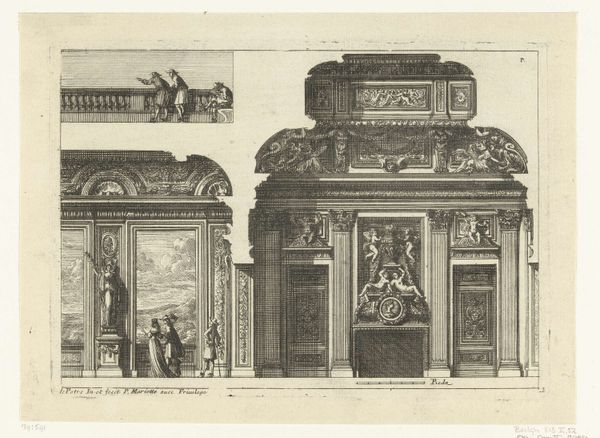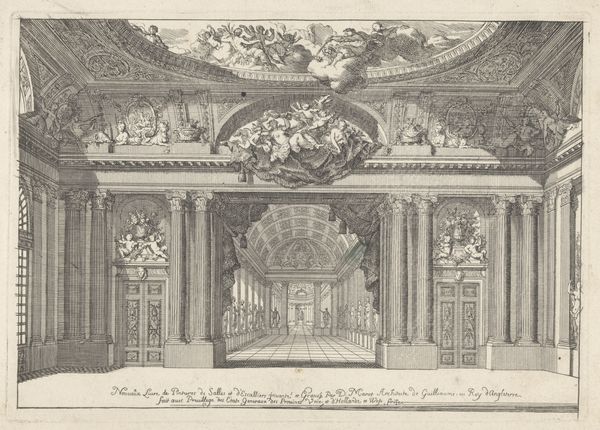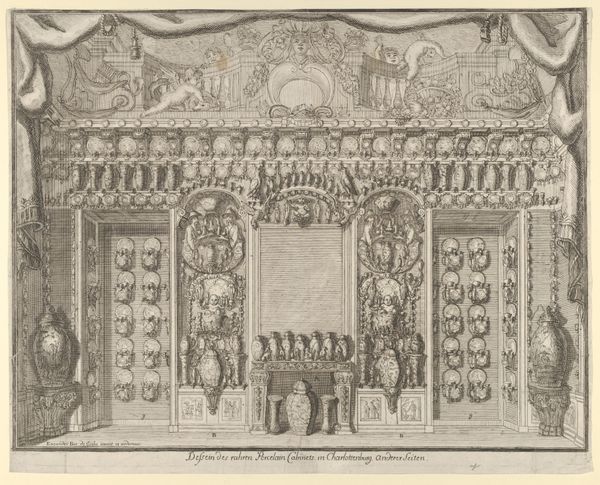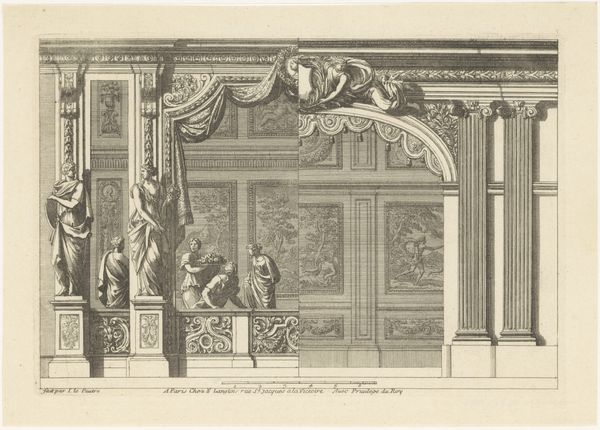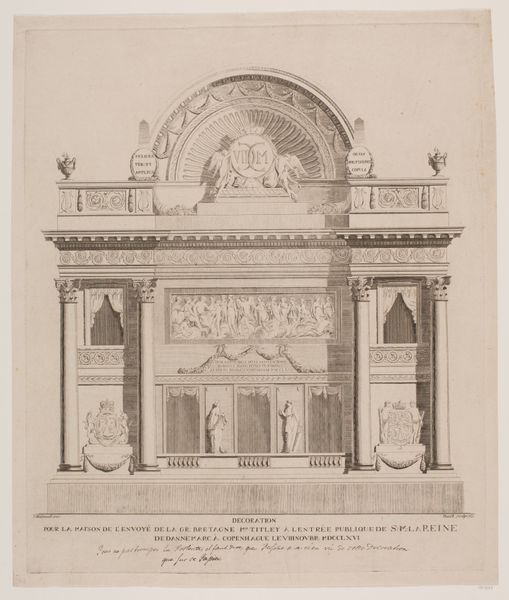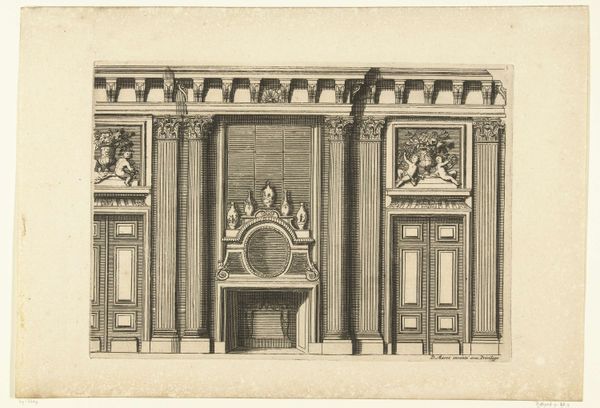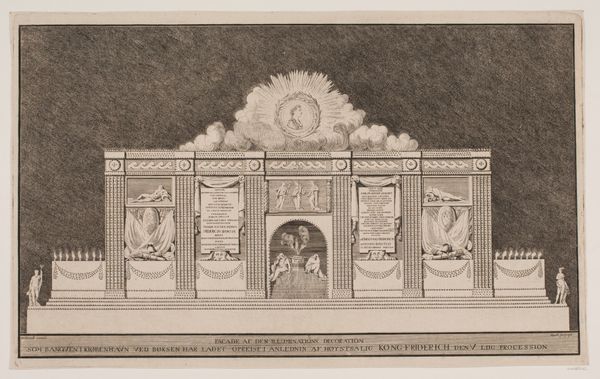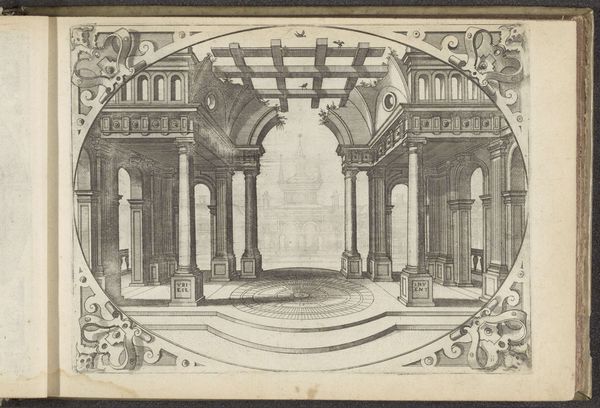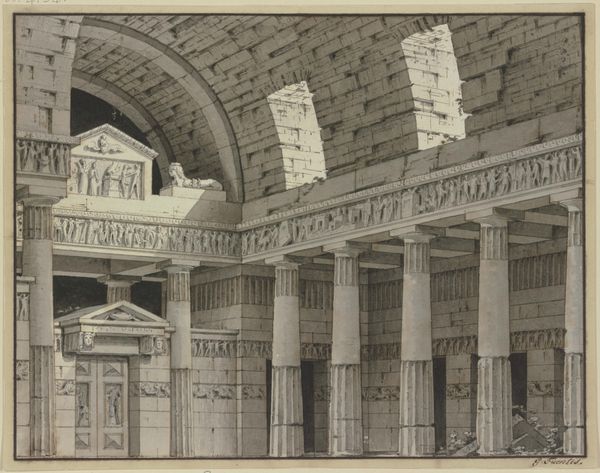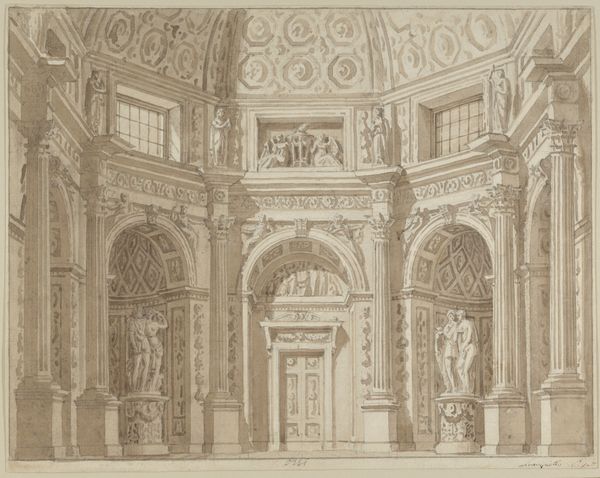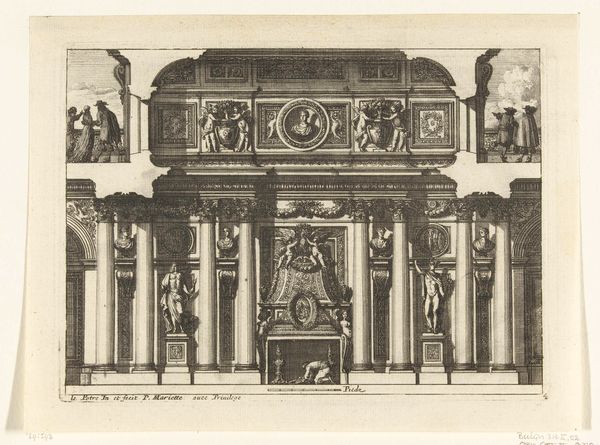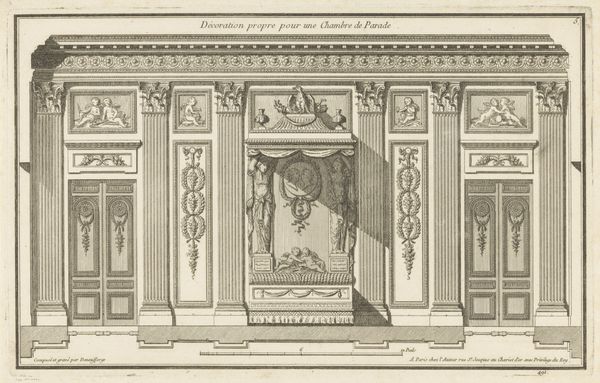
drawing, print, engraving, architecture
#
drawing
#
neoclacissism
# print
#
ancient-egyptian-art
#
geometric
#
cityscape
#
history-painting
#
engraving
#
architecture
Dimensions: sheet: 8 3/4 x 13 3/4 in. (22.2 x 34.9 cm)
Copyright: Public Domain
Editor: So, this is Gaetano Landi's "Design for an Egyptian-style Interior," created around 1810. It’s a drawing, an engraving of what looks like an…ambitious room design. The geometric shapes and hieroglyphs create such a rigid feeling. How would you interpret this work? Curator: What strikes me immediately is how Landi is playing with cultural memory. Egyptian motifs weren't simply decorative at this time; they were heavily loaded with historical and political significance, especially after Napoleon's Egyptian campaign. Look at how the artist uses symmetry and proportion to create a space that's both familiar—resembling neoclassical interiors—and yet utterly foreign through its symbolic vocabulary. Notice how forms we associate with death and the afterlife have been appropriated. What sort of feelings do you have? Editor: It does feel very deliberate, how he mixes familiar architectural elements with these exotic symbols. Is he trying to create a connection between past and present, or something else entirely? It feels a bit… heavy. Curator: I would argue he’s invoking a sense of timelessness and perhaps even a claim to a lineage of power and knowledge. Think about it: by incorporating Egyptian imagery, Landi taps into the perceived wisdom and grandeur of an ancient civilization. It's interesting to consider whether he has chosen images relating to certain Egyptian dynasties and the meaning attached to them. Editor: So, it's not just about aesthetics, it’s about the emotional and intellectual weight that these symbols carry and where they ultimately derive. The idea of an interior space as a symbol, how interesting. Curator: Exactly. And think about the psychological impact on anyone occupying this space! Cultural identity can be complex. These images, whether the owner knew what they meant, and perhaps the artist didn’t, would still hold their historic, potent, presence. It creates an interior charged with memory.
Comments
No comments
Be the first to comment and join the conversation on the ultimate creative platform.

